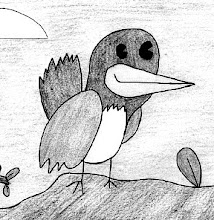"Tourette's is associated with several comorbid conditions, or co-occurring diagnoses, which are often the major source of impairment for an affected child. Among patients whose symptoms are severe enough to warrant referral to specialty Tourette's clinics, only a small minority have no other conditions, and obsessive–compulsive disorder (OCD) and attention-deficit hyperactivity disorder (ADHD) are often present. In children with Tourette's, ADHD is associated with functional impairment, disruptive behavior, and tic severity. Other comorbid conditions include self-injurious behaviors (SIB), anxiety, depression, personality disorders, oppositional defiant disorder, and conduct disorders."
"Obsessive–compulsive disorder (OCD) is a mental disorder characterized by intrusive thoughts that produce anxiety, by repetitive behaviors aimed at reducing anxiety, or by combinations of such thoughts (obsessions) and behaviors (compulsions). The symptoms of this anxiety disorder range from repetitive hand-washing and extensive hoarding to preoccupation with sexual, religious, or aggressive impulses. These symptoms can be alienating and time-consuming, and often cause severe emotional and economic loss. Although the acts of those who have OCD may appear paranoid and come across to others as psychotic, OCD sufferers often recognize their thoughts and subsequent actions as irrational, and they may become further distressed by this realization."
"Dermatillomania (also known as compulsive skin picking or CSP) is an impulse control disorder and form of self-injury characterized by the repeated urge to pick at one's own skin, often to the extent that damage is caused. Dermatillomania may be related to body dysmorphic disorder (BDD). These disorders are a cross between mental disorders, such as obsessive compulsive disorder (OCD), and physical disorders such as stereotypic movement disorder because the person performs repetitive movements without being bothered by or completely aware of them."
"Guanfacine is seen to effect a number of cognitive factors, including working memory improvement, distractibility reduction, response inhibition improvement, and attention control. Performance increases in spatial working memory has also been observed in humans."
"Olanzapine is an atypical antipsychotic, approved by the FDA for the treatment of: schizophrenia and Bipolar disorder. It has also been used for Tourette syndrome and stuttering. A common side-effect is acathisia, a syndrome characterized by unpleasant sensations of "inner" restlessness that manifests itself with an inability to sit still or remain motionless. Its most common cause is as a side effect of medications, mainly neuroleptic antipsychotics."
"Risperidone has also been used off-label for the treatment of anxiety disorders, such as obsessive-compulsive disorder; severe, treatment-resistant depression with or without psychotic features; Tourette syndrome; disruptive behavior disorders in children; and eating disorders, among others. In two small studies risperidone was reported to successfully treat the symptoms of phencyclidine psychosis due to acute intoxication and chronic use. Common side effects include severe anxiety, akathisia, sedation, dysphoria, insomnia, sexual dysfunction, low blood pressure, muscle stiffness, muscle pain, tremors, increased salivation, and stuffy nose."
"Sertraline hydrochloride is an antidepressant of the selective serotonin reuptake inhibitor (SSRI) class. It was introduced to the market by Pfizer in 1991. Sertraline is primarily used to treat major depression in adult outpatients as well as obsessive–compulsive, panic, and social anxiety disorders in both adults and children. A review mentions that sertraline can be used for the treatment of OCD co-morbid with Tourette syndrome; however, sertraline may cause exacerbation of tics in Tourette syndrome."
"Dextroamphetamine is a psychostimulant drug which is known to produce increased wakefulness and focus in association with decreased fatigue and decreased appetite. Drugs with similar psychoactive properties can be referred to or described as "amphetamine analogues", "amphetamine-like", or having "amphetaminergic" effects. Physical effects of dextroamphetamine can include anorexia, hyperactivity, dilated pupils, flushing, restlessness, dry mouth, headache, tachycardia, bradycardia, tachypnea, hypertension, hypotension, fever, diaphoresis, diarrhea, constipation, blurred vision, aphasia, dizziness, twitches, insomnia, numbness, palpitations, arrhythmias, tremors, dry and/or itchy skin, acne, pallor, convulsions, coma, stroke, heart attack and death. Psychological effects of dextroamphetamine can include euphoria (via increased dopamine and serotonin), anxiety (via increased norepinephrine), altered libido, increased alertness, increased concentration, increased energy, increased self-esteem, increased self-confidence, increased excitation, increased orgasmic intensity, increased sociability, increased irritability, increased aggression, psychomotor agitation, hubris, excessive feelings of power and/or superiority, repetitive and/or obsessive behaviors, paranoia and amphetamine psychosis can occur. The long term effects of amphetamines use on the neural development of children has not been established."
Friday, October 2, 2009
Subscribe to:
Comments (Atom)

